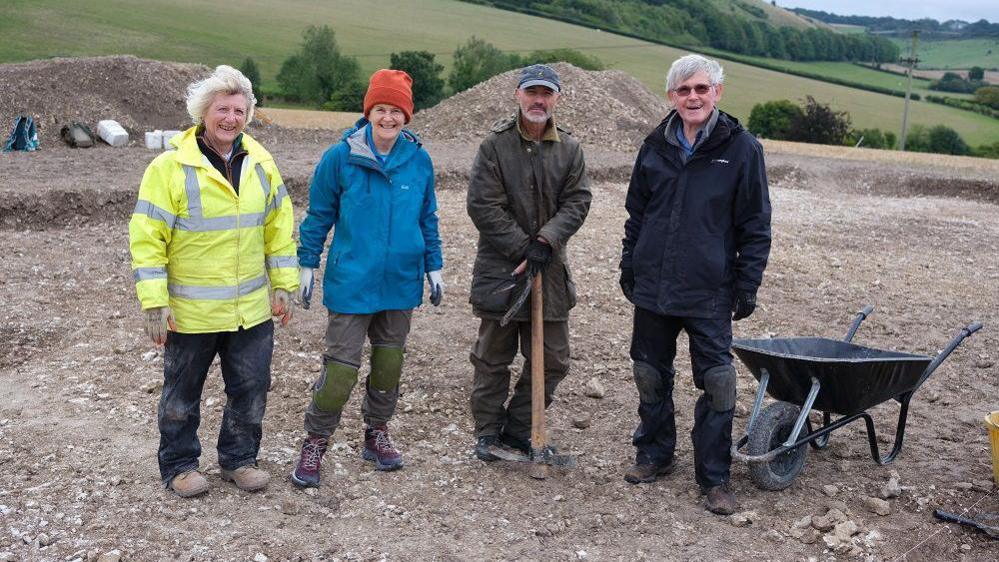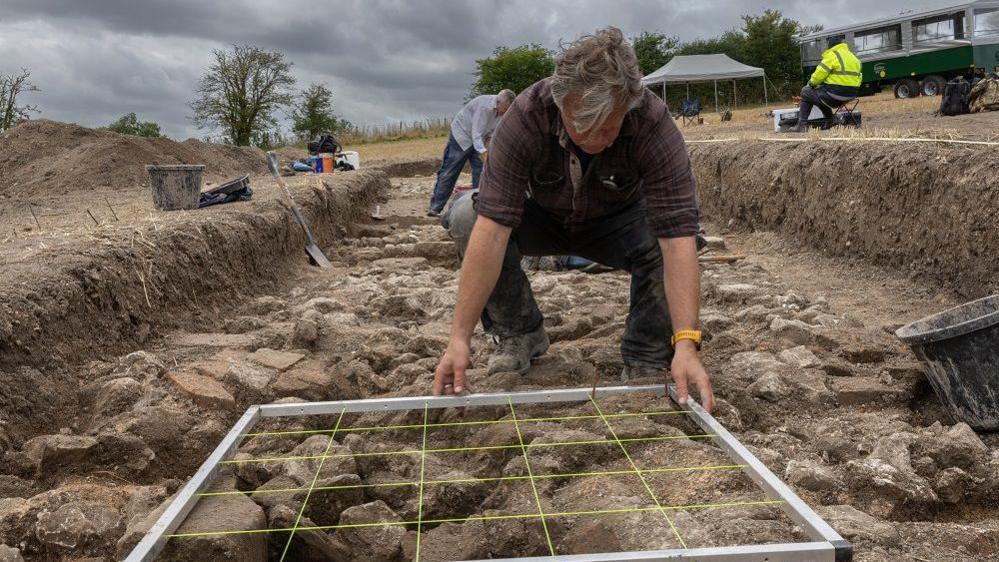Dig reveals luxury Roman villa with bath house
- Image source, Teffont Archaeology

Image caption, The owners of the villa had put some money into it, with mosaics revealed in the dig
1 of 3
- Published
A Roman villa indicating a "luxury lifestyle" has been discovered by archaeologists and 60 volunteers after metal detectorists reported a number of finds in the area.
It is the first time the site has been excavated and it is the only Roman villa known of in Wiltshire's Chalke Valley.
At 35m long, the villa had columns, mosaics, a bath house and possible outdoor pool, with finds now undergoing analysis before moving to Salisbury Museum.
Dr Denise Wilding, of Teffont Archaeology which ran the dig, said: "They've put some time and money into making it quite a nice place to be."

Dr Wilding said the villa had been "really well done-out", shown by additions such as the mosaics
'Luxury lifestyle'
Dr David Roberts, from Cardiff University and part of Teffont Archaeology, was the dig's co-director.
"The site was likely the centre of a significant estate in the later Roman period, and its owners must have extracted a great deal of labour and surplus from the local farming communities to fund their luxury lifestyle," he said.
The dig found a barn, the main villa building with a separate bath house and an area that may have been an outdoor pool.
Dr Wilding said the villa and bath house were "really well done-out" with finds including wall plaster, mosaics and the base of a column.
"The owners are clearly trying to tie themselves into quite a Roman way of living."
She said the find shows there were "local elites" in the area who had taken on Roman culture.

The volunteers did a "fantastic job", said Dr Wilding
By examining some of the less glamourous finds - like seeds and animal bones - they will be able to find out about everyday life, like the crops that were being grown and the animals farmed.

Like many Roman buildings with bath houses, it featured an underground heating system called a hypocaust
Dr Wilding explained that detectorists had been reporting finds to Salisbury Museum for a while via the Portable Antiquities Scheme, which records items discovered by the public.
After further investigations showed buildings at the site, the Cranborne Chase National Landscape's Chase & Chalke Landscape Partnership Scheme funded the dig and called for volunteers.
"Our volunteers do a fantastic job of everything we ask them to," added Dr Wilding.
Get in touch
Tell us which stories we should cover in Wiltshire
Follow BBC Wiltshire on Facebook, external, X, external and Instagram, external. Send your story ideas to us on email or via WhatsApp on 0800 313 4630.
More stories like this
- Published7 August 2024

- Published17 April 2016


